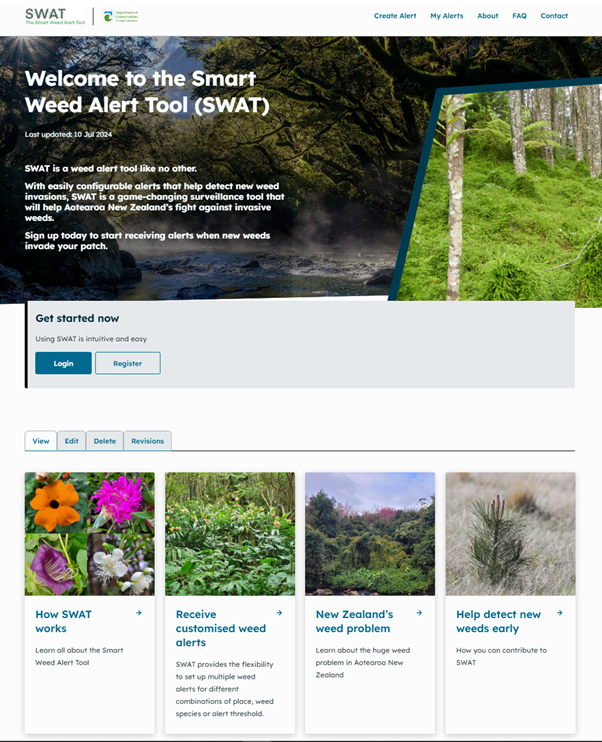NZ currently spends around $50 million per year controlling weeds and managing their impacts. This cost is expected to increase as new weeds emerge and current weeds spread – both of which are likely to accelerate under a warming climate. Despite a huge pool of current, emerging and potential weeds, NZ currently have no effective way of detecting new weeds when they first invade; mostly we rely on luck — as was highlighted in the 2021 Parliamentary Commissioner for the Environment report on weed management in New Zealand.
Kate McAlpine (Department of Conservation) and Nigel Charman (Technical Lead) are working to improve our chances of detecting new weed incursions through the development of an innovative digital tool that harnesses the power of data mobilised via the GBIF network.
Kate and Nigel recently demonstrated the tool they are developing - the Smart Weed Alert Tool or SWAT (see the screen shot above) - which will allow users to receive highly specific alerts based on criteria they set. SWAT will automatically scan GBIF for new exotic plant records in NZ to determine if they match any user’s alert criteria. If a match is found the user(s) will be notified. SWAT will allow users to provide a range of criteria including geographic area (e.g., regions or districts, iwi areas of interest, community restoration areas), buffer zones around the geographic areas, categories of weeds, and the number of occurences that have been recorded (e.g., first occurrence). Importantly, SWAT will enable users to create alerts for new and emerging weeds without needing to specify a species name.
Kate and Nigel hope that SWAT will result in a positive feedback loop that utilises the power of the citizen scientist. Citizen scientists will be able to contribute to SWAT simply by posting their exotic plant observations to iNaturalist, once the identification has been confirmed in iNaturalist the record automatically feeds into GBIF and will then be checked by SWAT. Kate and Nigel suggest that knowing that their iNaturalist observations are contributing to a national weed surveillance tool is likely to incentivise the users of iNaturalist. This in turn will improve weed distribution data, making SWAT more accurate and powerful.
In addition to the records already being mobilised via citizen science platforms and research agencies, SWAT will benefit from the work of regional councils and government agencies once their weed data are mobilised into GBIF.
Kate and Nigel state that SWAT could be expanded to include other types of invasive pests such as fish, invertebrates and fungi.
When released SWAT will be open source and freely available to any person or organisation with an interest in weeds.
